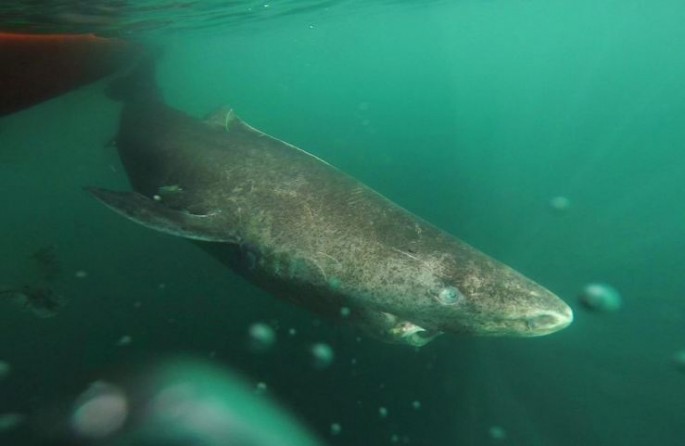New research confirms the rarely seen Greenland shark that prowls the bitingly cold waters of the Arctic Ocean is the longest living vertebrate animal known to science.
Apart from its longevity, the Greenland sharks also stands out from other sharks by being among the biggest (in excess of six meters long) and probably the slowest swimming shark on the planet. It has a top speed of only 2.6 km/h. In contrast, the average walking speed of a human is 5 km/h.
More ominously, the shark's meat is toxic to eat, another reason for its long life since other predators refrain from eating it.
Marine biologists at the University of Copenhagen (UC) have used a new method to confirm that with a life expectancy of at least 270 years at the youngest and over 500 years at the oldest, the Greenland shark has the longest life expectancy of all vertebrate animals on the planet.
An international team of researchers led by marine biologists at UC's Department of Biology has revealed one of the enigmatic shark's many secrets. Using carbon-14 dating, they found a method to estimate the lifespan of Greenland sharks.
Their results published in the distinguished American scientific journal, Science, reveals the sharks' eyes possess the main clue to their life expectancy.
"Our lifespan study is based on the carbon-14 dating of Greenland shark eye lenses," said main author Julius Nielsen, a PhD student the university
"As with other vertebrates, the lenses consist of a unique type of metabolically inactive tissue. Because the center of the lens does not change from the time of a shark's birth, it allows the tissue's chemical composition to reveal a shark's age.
"We use well-established radiocarbon methods, but combine them in a new way. This approach, along with the extraordinary ages for these sharks makes this study highly unusual," said Nielsen.
This is the first time carbon-14 dating of eye lenses has been used to estimate the life expectancy of fish.
Aarhus University researchers were responsible for the carbon-14 analyses, and the study is a good example of the synergistic effect that occurs when different research fields collaborate and make use of each other's competencies.



























